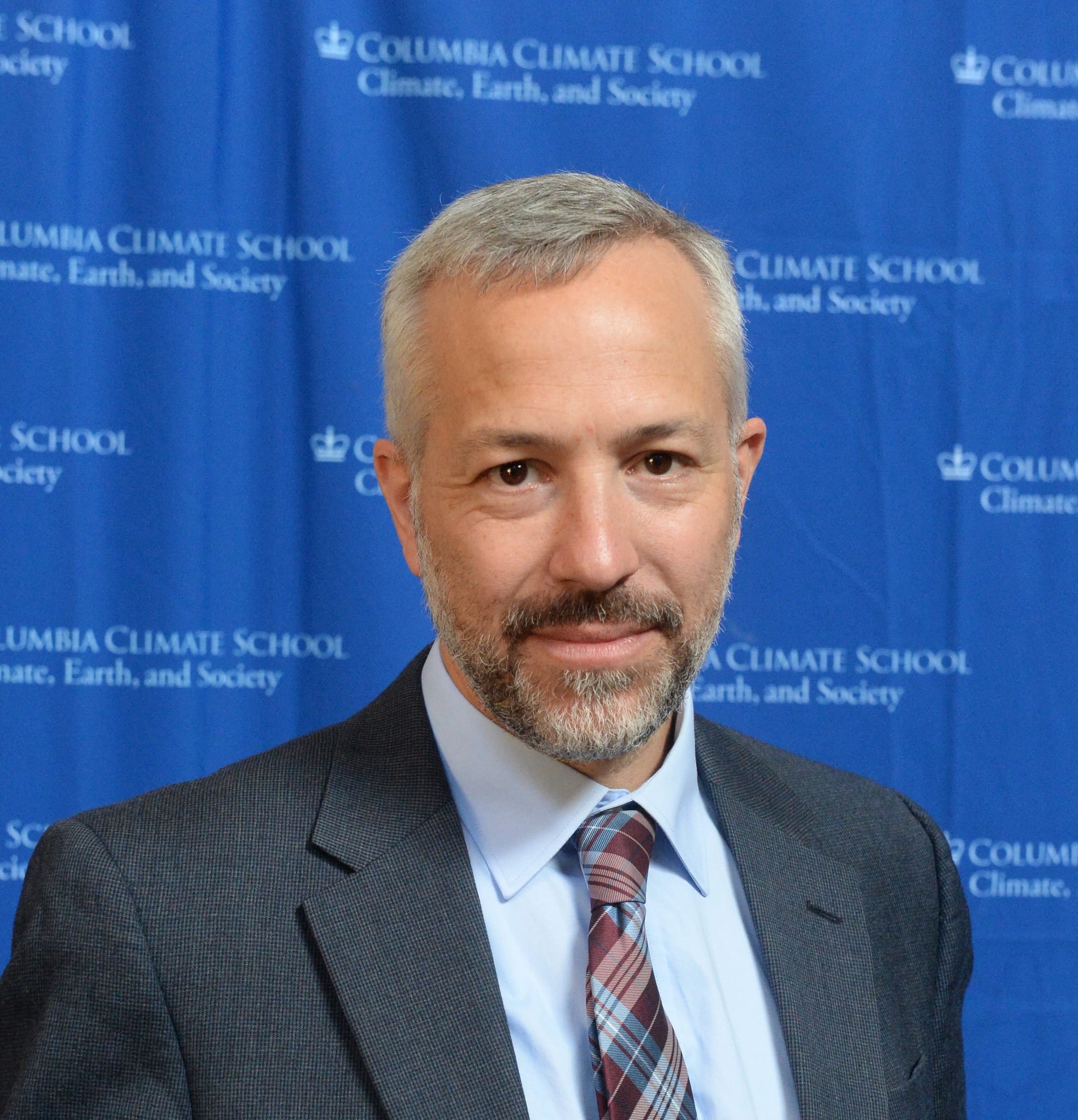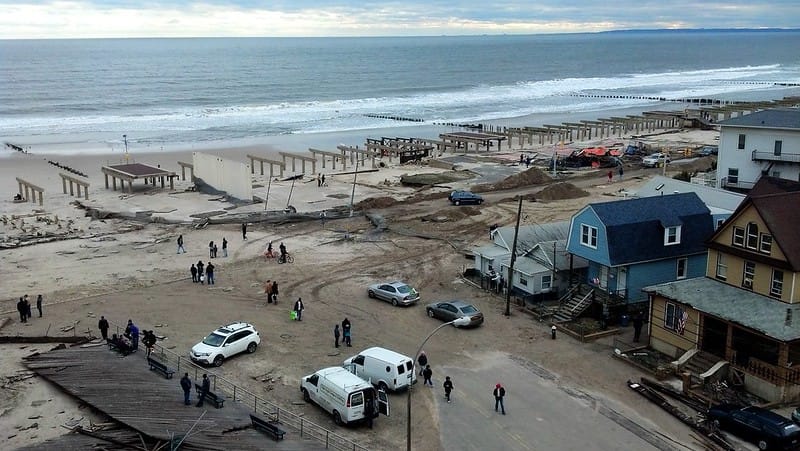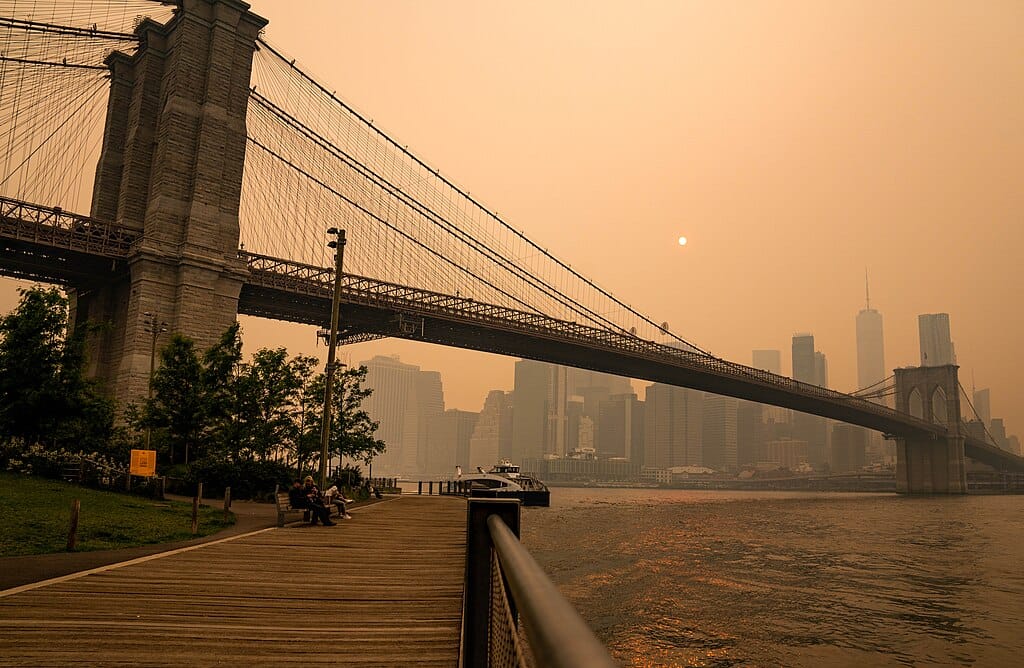The Weekly: Climate Risk Literacy in Commercial Real Estate
Extreme weather, rising insurance premiums, new carbon regulations, and shifting market expectations are pushing commercial real estate (CRE) into uncharted territory.
The Epicenter editors recently interviewed Daniel Zarrilli, former Chief Resilience Officer for New York City and current Chief Climate & Sustainability Officer at Columbia University, about his work during the post-Hurricane Sandy recovery effort.

The Epicenter editors recently interviewed Daniel Zarrilli, former Chief Resilience Officer for New York City and current Chief Climate & Sustainability Officer at Columbia University, about his work during the post-Hurricane Sandy recovery effort.
The article below offers important lessons for climate resilience and adaptation leaders worldwide in preparing cities for escalating climate risks.
If you ask Daniel Zarrilli, the former Chief Resilience Officer for New York City, to name the single most important shift in the Big Apple’s post-Hurricane Sandy playbook, he does not talk about seawalls or sand dunes. He starts with perspective. “We did not just say, make sure the next Sandy never happens again,” he says. “We widened our view of risk.”
That widened view included everything we think of today as climate risk—from sea level rise, to extreme heat, rain, and coastal storms like Sandy. Today marks the 13th anniversary of Hurricane Sandy making landfall in the Tri-State area on October 29th, 2012. The storm killed 147 people in and around the Atlantic Basin, 44 of those in NYC alone, and cost New York City more than $19 billion in damage and lost economic activity.
“Hurricane Sandy really snapped everyone's attention to the fact that climate change wasn't something that's going to happen to people far away, a century from now. We're already starting to live with these consequences,” Zarrilli says.
That perspective shift, with a focus on climate adaptation during the “blue sky” moments, as Zarrilli, who’s now the first ever Chief Climate & Sustainability Officer at Columbia University, calls them, has made New York a more resilient city, and it’s a mindset that Zarrilli argues, other cities can and should adopt now, before their own disaster strikes.

Zarrilli’s path to becoming New York City’s first Chief Resilience Officer began years before the superstorm struck. An engineer by training, Zarrilli had worked for the New York City Economic Development Corporation, managing waterfront assets such as cruise terminals, ferry landings, and the Hunts Point Food Distribution Center—properties that were badly damaged by the 2012 storm.
His on-the-ground recovery work in those early days, coupled with his deep familiarity with the city’s maritime infrastructure and his involvement in pre-Sandy climate adaptation discussions, led Mayor Michael Bloomberg to tap him for the post-storm Special Initiative for Rebuilding and Resiliency.
After helping to write the city’s first comprehensive coastal protection plan, Zarrilli was appointed Director of Resiliency, a role later formalized as Chief Resilience Officer, where he oversaw roughly $20 billion in climate adaptation and risk-reduction investments across New York City.
When Zarrilli stepped into his new role, the city was still reeling from the storm’s devastation. What began as an urgent recovery effort quickly evolved into something larger: a blueprint for how a modern city could rebuild stronger, fairer, and smarter in the face of accelerating climate threats.

It’s important to note that New York’s perspective shift didn't just come after Sandy. It began a few years before. The New York City Panel on Climate Change, formed in 2009 and codified in city law in 2012, had already provided decision-makers with a standard, science-based framework for understanding rising hazards and future projections. That institutional muscle helped the city move quickly from “what just happened” to “what else could happen” to “what do we do now,” according to Zarrilli.
The city’s post-storm strategy was laid out in A Stronger, More Resilient New York, the plan that Zarrilli helped create, which allocated roughly $20 billion across more than 250 initiatives to support climate adaptation in the city. According to Zarrilli, one analysis in that effort posed a key question that underlined future investments: If the same storm struck New York in 2050, given climate projections, how large would the losses be? The analysis estimated costs approaching $90 billion, and that staggering price tag underlined just how vital climate resilience and future planning would be.
Zarrilli’s team looked at a “sources and uses” capital stack across federal, state, city, utility, and private investments and aligned each of them. “It was our way to try to simplify all the different funding streams that were out there and marshal them towards a comprehensive plan,” he says.
After the cleanup and restoration phase following Sandy, some of the largest investments in resilience were visible projects, while others were hidden. For example, the two-and-a-half-mile East Side Coastal Resiliency (ESCR) project, running from Montgomery Street to East 25th Street, is a $1.45 billion flood protection system that elevates parks and adds surge barriers to shield 110,000 residents from future flooding, 28,000 of them who live in poverty.
A largely unseen project is the hardening of the Con Edison grid, a program, approved by New York regulators in 2014, that directed about $1 billion to floodproof substations and strengthen distribution systems, including elevating equipment and adding flood barriers to protect against storms at three feet above FEMA’s 100-year flood level. Those investments followed a formal climate vulnerability process that influenced rate cases and engineering standards. Work on the ESCR project began in 2021 and is expected to be completed by 2026, though the first portion was already completed in 2024. The Con Edison project was finished in 2019.
Zarrilli and the city’s housing recovery team also recognized the need to address vulnerable housing along the city's coast. The post-Sandy housing strategy focused on creating programs to rebuild and elevate damaged homes while offering voluntary buyouts in the most flood-prone neighborhoods. Working with state and federal partners, Community Development Block Grant–Disaster Recovery funds and the NY Rising program were used to help residents relocate from vulnerable coastal areas, such as Staten Island’s Oakwood Beach, and convert those areas into open space to reduce future flood risk. “There were a lot of conversations around buyouts and managed retreat,” Zarrilli says, pointing out that New Orleans went through a similar discussion following Katrina.” Those are really fraught conversations, if you haven't introduced them before someone is knocked out of their home.”
Zarrilli emphasizes that the pivot from recovery to resilience can’t depend on one-time financing or political willingness. “This is the work we will be doing for the rest of our lives,” he says. After the initial surge of funds, New York embedded climate science into the city’s ordinary routines: updating zoning and building codes, publishing climate-informed design guidelines for capital projects, and baking future risk into park, hospital, and street reconstructions. “Now every dollar we're spending is moving us into a safer and more resilient place,” he says. The city’s climate office documents this shift across multiple code changes and design standards tied to NPCC projections.
It’s also vital for cities to consider how the climate threat is evolving, according to Zarrilli, who spoke of events like the impact of the Canadian wildfires on air quality in New York in 2023, as well as the repeated recent rain-caused flooding events in the city that frequently cause disruptions and service interruptions for New York’s subway system. Flooding continues to pose a significant problem for New York, which will require a blend of solutions, including hardening coastal areas, returning some areas of the city to green spaces to help absorb excess water, and relocating residents from the most flood-prone areas to protect the city, as this recent New York Times piece explains.

“The nature of the risk is changing on us. The nature of the resources that we have is changing. And this is all becoming something that we just have to deal with as a normal course of business,” he says.
Zarrilli acknowledges that New York has real advantages over other cities. The city has massive resources, a huge tax base, and 520 miles of coastline that concentrate attention and investment. Prior to 2012, Zarrilli says that New York had a limited climate adaptation plan in place. “It was an academic understanding of risk. We had maps, there were things that were published,” he says. “And it was good information, and there was good analysis and study, and planning work happening. But that's pretty much where it stopped, because there weren't any resources to do much about it,” he continues, pointing out that other cities will need to adapt solutions to their own geographies and politics.
For leaders looking to minimize climate risk and improve adaptation in cities across the U.S., Zarrilli offers three questions he used to help structure New York’s post-Sandy work, which remain relevant.
1. What happened?
First, he says, in the days after a climate disaster, it's vital to know what exactly happened. He says that leaders need to build a shared, factual narrative of the event and understand why and where systems failed. That assessment should include uncomfortable truths about design standards and maintenance backlogs that may have fallen by the wayside due to changing political winds and cultural shifts.
2. What else could happen?
Second, climate leaders need to resist tunnel vision when it comes to climate events. New York has had to balance storm surge with rainfall, heat, health, smoke, and sea level rise—all in one plan. He suggests that city leaders need to understand that their risk will look different, and that it’s important to name it. Ask “What else could happen?” and answer it clearly and specifically for your city and location.
3. What do we do now?
Third, ask, “What do we do now?” Align the plan with the money, authorities, and timelines in your city. Decide which assets must be protected at all costs, which ones can safely fail, and where retreat (rather than rebuilding) might make the most sense.
Zarrilli says it’s vital for city leaders to ask these questions now, instead of after a disaster. “If money does start to flow into your community, you want to have already thought through the options and how to use that moment to buy down future risk,” Zarrilli says. The alternative is to leave billions on the table, rebuild to yesterday’s climate, and learn the hard way when the next storm hits.
“There's a lot that hasn't been done yet, that needs to be done, to protect people and upgrade infrastructure and coastal protections,” Zarrilli says.
Thinking holistically and collectively about the future of climate adaptation is vital to ensure that when the next disastrous climate event arrives, cities are better prepared for it.
After all, Zarrilli notes, “There are limits to what we can adapt to if we don’t end our reliance on fossil fuels.”
Have thoughts to share on this piece, or want to add your voice to the conversation? Reach out!